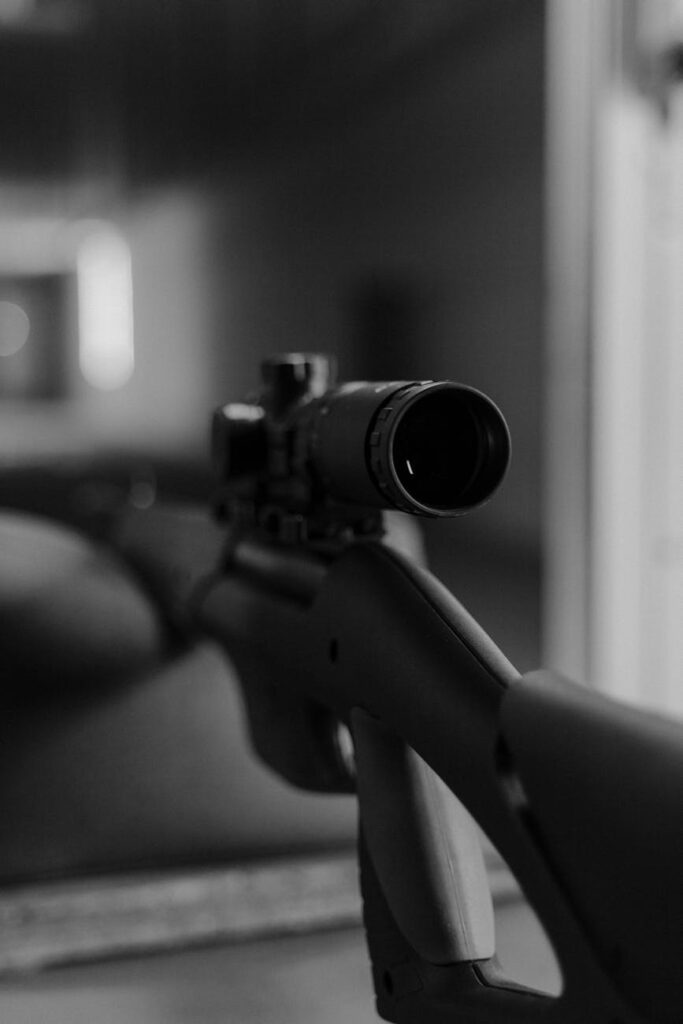Sighting in Your Scope
Properly sighting in your rifle scope is an essential step for ensuring perfect accuracy when shooting. This process, also known as zeroing, aligns the crosshairs of your scope with where the bullet will hit at a certain distance. Whether you’re a seasoned marksman or a novice shooter, mastering this technique is crucial for precision.
Importance of Sighting
Sighting in your rifle scope is fundamental for achieving the best possible shot from your firearm. It ensures that your point of aim corresponds with the point of impact, a synchronization that can significantly improve your shooting accuracy. By taking the time to correctly sight in your scope, you can trust that your rifle will perform as expected in various scenarios—whether you’re hunting, target shooting, or in competition (The Range 702).
Steps for Sighting
To begin sighting in your rifle scope, follow these key steps to establish a solid foundation for precise shooting:
-
Adjust Eye Distance
Ensure that you have the correct eye relief to prevent the scope from hitting your eye upon recoil. This distance is crucial for maintaining both safety and comfort while shooting. -
Align the Reticle
Properly aligning the reticle, or crosshairs, is essential for shot preparation. This step ensures that the reticle is perfectly level with your rifle to avoid “Reticle Cant,” which can lead to off-target shots. -
Set Your MOA
Adjusting your Minute of Angle (MOA) allows for precise shot angles. Most rifle scopes adjust in ¼ MOA increments; this setting is pivotal for fine-tuning your aim (The Range 702). -
Fire Three-Shot Groups
To confirm your scope’s accuracy, fire a group of three shots at a target. Analyze the point of impact for each shot and adjust your scope accordingly. This iterative process helps to calibrate your aim, especially over varying distances.
Remember, sighting in is not a one-size-fits-all procedure. Factors such as individual shooting style, the type of rifle used, and environmental conditions can all influence the sighting process. For more in-depth guidance on choosing a rifle scope and understanding the intricacies of MOA vs MRAD, explore our dedicated articles.
By following these steps and practicing regularly, you can hone your skills and ensure that your rifle scope is a reliable tool for achieving the perfect shot.
Environmental Factors and Bullet Trajectory
When you’re sighting in your rifle scope, it’s not just about the adjustments you make on your scope; environmental factors play a significant role in bullet trajectory. Understanding how altitude, temperature, and humidity can affect your shot is crucial for achieving perfect accuracy.
Altitude, Temperature, and Humidity
Each of these elements can alter the air density around you, which in turn impacts the bullet as it travels towards your target.
-
Altitude: At higher altitudes, the air becomes thinner, resulting in less friction and resistance on the bullet. This can lead to a smoother trajectory over extended ranges, as the bullet maintains its speed for a longer period (The Northern Hunter).
-
Temperature: The temperature can directly influence air pressure. Warmer air is less dense, offering less drag on the bullet and potentially a flatter trajectory. Conversely, cooler temperatures mean denser air and increased drag, which can cause the bullet to slow down more quickly and drop sooner.
-
Humidity: Higher humidity levels mean more water vapor in the air, which displaces oxygen and nitrogen molecules. This results in lower air density and, therefore, reduced friction and resistance on the bullet’s path, allowing for a potentially longer and straighter trajectory.
Impact on Bullet Trajectory
Understanding these environmental factors is essential because they can significantly alter where your bullet will land. Here’s how they can affect the bullet’s trajectory:
| Factor | Impact on Trajectory |
|---|---|
| Higher Altitude | Less air resistance, potential for a flatter trajectory |
| Higher Temperature | Less air density, less drag on the bullet |
| Increased Humidity | Reduced air density, less friction and resistance |
Keep in mind that these factors can interact in complex ways. For instance, a hot and humid day at a high altitude will have a very different impact than a cold, dry day at sea level. As you mount your rifle scope and prepare for a day of shooting, consider these environmental effects and how they might require you to adjust your aim to maintain accuracy.
Whether you’re hunting, participating in competition shooting, or simply practicing at the range, it’s important to take these factors into account. By doing so, you can ensure that when you’re sighting in your rifle scope, you’re accounting for all the variables that affect where your bullet will strike.

